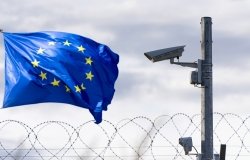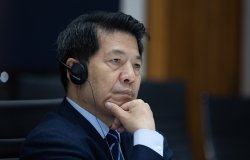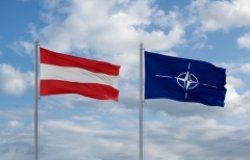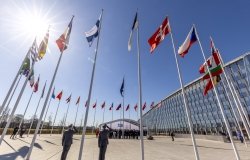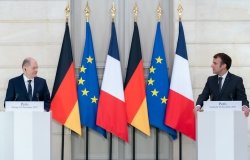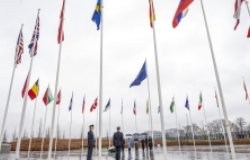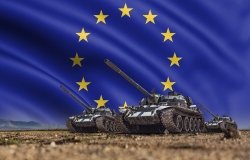Energy Security and Diversity of Supplywithin the European Union, 1973-2008
This paper focuses on the interrelationship between the attempts to create a common European energy policy, on the one hand, and the institutional development of EU (and its predecessors), on the other hand.
We can distinguish three stages in the development
of EU energy policy:
In the first period, from 1957-72, energy was not regarded as an issue of great concern. Cheap imported oil replaced coal, and although this was a period of marked advances in European co-operation, this was not reflected in the oil and gas sector.
In the second period, 1973-1985, energy re-entered the European agenda and this time as a problem of oil prices and supplies. But common policies largely failed.
The last stage, from the late 1980s to the present, represents a revitalization of attempts to introduce a common EU policy. The EU is still far from an effective common energy policy, but since the late 1980s a number of important EU initiatives have been taken to strengthen the supranational influence on the energy policy (Matlary 1991, Lyons 1992, 1994, Padgett 1992).
Energy issues have increasingly been linked to three general perspectives:
1. First, the EU's internal-market program where competition policy plays a major role.
2. Second, the EU's attempts to establish a common environmental policy with fiscal measures as key instrument.
3. Third, the European Energy Charter and the Charter Treaty which were attempts by EU to create international market regimes that could support reform in the former East Bloc and thereby secure EU's energy supplies. (Andersen 2005)
The energy crises of 1973-74 and of 1979 (following the Iranian revolution) have brought energy to the fore as a crucial concern.
Energy problems, in their broadest sense, together with a group of important and substantially related economic issues, have become fundamental European security concerns. Although the importance of traditional military and strategic issues should not be minimized, for most Europeans, including the informed public and even those generally attuned to foreign policy, discussion of European deterrence and defense has tended to become somewhat abstract and removed.
By contrast, economic and energy security issues have become pressing and important subjects of great attention in both public and elite arenas. (Lieber 1980, p. 139)
It took the shock of the Yom Kippur War and the resultant Arab oil embargo to illuminate suddenly the magnitude and consequences of European vulnerability. The impact of this experience was not that a modest reduction of oil supplies for a few months threatened disaster, so much as a dramatic realization at both the governmental and public levels that Western Europe was desperately vulnerable. Not only did the 1973-74 crisis evoke old memories of war-time privation, but it also brought awareness that, as a result of her oil import dependence, Western Europe ran the risk of seeing her industry, transportation and entire economic life brought to a halt through some future upheaval in the international energy supply system. In short, energy and oil had become security issues par excellence. (Lieber 1980, p. 144)
Instead of stimulating the members of the European Community to greater efforts of cooperation in the face of necessity, the 1973-74 crisis proved painfully disruptive to the Nine. On October 1973, the Arab Oil Producers (OAPEC) announced a selective embargo which divided the Europeans into three categories: favored countries (France and Britain) to receive normal shipments; disfavored countries (Holland) to be totally embargoed; and others (the remaining members of the EC) to experience phased reductions of 5 per cent each month. National anxieties about oil supply thus predominated during the initial weeks of the crisis. Efforts at cooperation within the Community and other multilateral frameworks were mostly unavailing, and some members of the Community adopted a sauve qui peut approach in the hope of negotiating bilateral deals with particular oil-producing countries. Most strikingly of all, some of the Europeans, including Britain and France, were willing to comply with the Arab boycott of the Netherlands - in flagrant contravention of Community rules. It took a month before the rest of the Nine quietly moved to support their Common Market partner, and this occurred only after Dutch threats to curtail natural gas exports to France, Belgium and Germany, and a realization that in any case the oil companies were able successfully to allocate available oil supplies among all the consumer countries. (Lieber 1979, p. 533)
During this period, the Community didn't prove able, however, to bring about the significant, even radical, changes which the energy situation dictated, particularly with regard to dependence on imported oil.
Within the Community, differences over the question of floor-prices for British North Sea oil, over subsidies for European-produced but costly (twice the world price) British and German coal, over the development of nuclear power, and about the balance between free market and dirigistic economic strategies prevented the Community from developing a powerful and effective energy policy. It did succeed in taking some small and not insignificant steps in encouraging modest measures of energy conservation, promoting efforts to reduce energy import dependence, and subsidizing pilot projects for energy research and development. But these remained limited in scale and impact, and in the main the results which were achieved in Europe were due primarily to the various national policies. In sum, the Nine succeeded in modestly lowering their energy import dependence from 59 per cent in 1973 to 55 per cent in 1978, and they reached a figure of between 48 and 50 per cent in the years 1985 to 1990. (Lieber 1979, p. 136)
France as a case-study
Successive French governments have increasingly tailored their foreign policies in light of the problem of energy security and its economic effects. These adaptations have brought France into conflict to a varied extent with its allies, and particularly with the United States.
France's foreign policy response included three related components:
1. a pro-Arab policy vis-a-vis the Middle East conflict
2. an effort to establish special bilateral relationships with individual oil producing states
3. and opposition to concerted action which would have aligned the oil consuming states against the oil producers.
To that end, in the aftermath of the October 1973 Arab-Israeli war, France sought to lead the European Community in a direction divergent from that favoured by the United States. Ultimately this effort failed under strong pressure from the Nixon-Kissinger Administration and due to the priority which most of the Europeans continued to give to security links with the United States. France even briefly rejected EEC solidarity by its willingness to comply with the Arab oil boycott of the Netherlands, though the Pompidou government backed away from this position after threats of retaliation involving supplies of Dutch natural gas to France. French opposition also failed to prevent the establishment of what was to become the International Energy Agency. Following the death of President Pompidou and the spring 1974 election of Valery Giscard d'Estaing, a less Gaullist and more Atlantistic figure of the center-right, France mitigated its hostility toward the IEA. Although becoming loosely associated with it through OECD and EEC mechanisms, domestic political considerations caused France to remain outside the Agency. (Lieber 1980, p. 147)
French policies have sought to promote a series of international dialogues in which France would serve as the interlocuteur valable and in which the influence of the superpowers, particularly the United States, would be attenuated or altogether absent. Initially this took the form of promoting a Euro-Arab dialogue, between the countries of the EEC and those of the Arab League. This, however, was slow to develop because of diffuseness of topics and of national interests (e.g., division among the Arabs between oil and non-oil producers and the absence of non-Arab OPEC members), long delays involving symbolic political issues (e.g. Palestinian representation), and difficulties in agreeing upon an agenda. French initiatives did lead eventually to the major Paris conference on North-South issues, the CIEC (Conference on International Economic Cooperation), but this ended in May 1977 without significant results.
The French government has continued to call for cooperation between oil producing and consuming countries in order to seek agreement over supply and demand patterns, investment, and other forms of long term cooperation.
While this has led to exploratory contacts between representatives of the EC and of OPEC, it has not precipitated dramatic new initiatives.
The French have continued to call for dialogue in other forums and have sought to promote a "trilogue," grouping Western Europe, Africa and the Arab world, based in part on references to France's historical Mediterranean vocation. Conspicuously absent from this format are both an Atlantic perspective and any role for North America, Eastern Europe, and the Soviet Union.
Over-arching diplomatic gestures have also been accompanied by tangible individual policies and actions. Among these, arms sales have played a particularly important role as a means both of recycling Arab petrodollars to France and of courting certain regimes. For example, during mid-1979, France carried on negotiations with Iraq for arms sales with a potential value of $1.5 billion and made commitments to deliver Mirage F-1 fighter-bombers, missile-launching patrol boats and other advanced weapons system. France also began delivery to Libya of ten missile-launching patrol boats, equipped with surface-to-surface "Otomat" missiles having a range of 160 kilometers - rather more than might be assumed to suggest mere coastal defense capability. (Lieber 1980, p. 148)
New developments: the Single Energy Market
Until 1988 the EC's role in energy policy was limited mainly to funding certain R&D programs (notably nuclear fusion) which individual Member States would not finance in full themselves because the costs were too high and the benefits too speculative.
New proposals for common energy policy in the late 1980s and early 1990s were closely related to the revitalization of the EU. The Single European Act (1987) and the Maastricht Treaty (1993) strengthened supranational authority in a number of policy areas, although not specifically in relation to energy policy (Wallace and Wallace 1996, Hix 1999). Such initiatives represent a form of political spill-over, where resourceful actors exploited new opportunities within a new institutional framework.
One important source of change was EU's internal market program. The internal market opened up for a number of initiatives in the energy sector, as part of a general deregulation policy (Matlary 1991). This was an area covered by new rules of majority decision-making, and where the commission had a strong role. In this perspective the question was not whether national energy sectors performed well in relation to various national objectives, but whether the organization of industries was consistent with principles of competition policy and detailed law. (Andersen 2005, p.3)
In 1988 the Commission published its Single Energy Market (SEM) proposals, which were intended to create a unified internal energy market without barriers to internal trade and competition. The authority for this was the preceding Single European Act, under which the Member States agreed to complete the common market by extending EC competition rules into previously excluded areas, including energy, transport, telecommunications and public procurement. The SEM proposals were not an attempt to introduce a coordinated energy policy but a set of competition rules for the energy sector. On a strict interpretation, they would give free rein to short-run market forces and, by banning subsidies and other forms of state intervention, they would have dismantled the apparatus of national energy policies. (Surrey 1992, p.1-2)
New developments: the Environmental Policy
Another impetus was the need to reduce acid rains and greenhouse gas emissions. After years of wrangling, the Large Combustion Plant Directive also emerged in 1988, with the aim of reducing the most dangerous emissions from power stations and large industrial plants. Two years later, the Council of Ministers committed the EC to reducing CO2 emissions. This was partly to contain disagreements between Member States and partly to establish a common EC position in wider international discussions aimed at reducing the risk of global climate change. In contrast with the SEM proposals, reducing environmental emissions, especially CO2, would require long-term, interventionist policies to affect both demand and supply. This led to Commission proposals for a further Directive in 1991. (Surrey 1992, p.1-2)
New developments: the Foreign Policy and Long-Term Supply Security
The increased weight of foreign policy was related to institutional changes in a context of radical changes. Since 1993 foreign policy became formally linked to the wider EU co-operation through the Maastricht Treaty, but without room for Commission activism or majority decisions. However, political ambitions about a more active role for the EU in international politics played an important role. For this reason the European Council – the regular meetings by EU's heads of state – has been active. Such initiatives have played a major role in connection with Eastern Europe (Andersen 2005, p.10).
As it turned out foreign policy interests wanted to use energy policy as an instrument in relation to reforms in the former East Bloc countries. Again, however, there was no clear idea about the way that energy policy could best do this.
There was some uncertainty as common foreign policy objectives were not clear, and decisions should still be firmly controlled by member states according to traditional rules of international co-operation. The changing status of this policy area was, however, reflected in ambitions about a more active leadership role for the EU in international matters. The details were left to those usually involved in EU energy policy formulation, reflecting the tug of war between sector interests and general market perspectives (Dore and De Bauw 1995).
The Energy Charter Treaty
What provided the opening for the EC's most ambitious move on long-term supply security was the disintegration of the Communist system in Eastern Europe and the Soviet Union. This move was the Energy Charter Treaty which has all the elements of a grand bargain based on the EU's interest in ensuring an expanding supply of reasonably priced gas and oil from the East, and the East's interest in ensuring a flow of investment finance, hard currency and technology from the West. This originated in an earlier proposal by the Dutch Government based on the idea of a communality of interests between the Western and Eastern parts of Europe. The Charter Treaty extends this idea to include the former Soviet Union which has very large gas and oil reserves. (Surrey 1992, p.16)
Through the Energy Charter Treaty, the EU wished to strengthen the framework for market-based solutions and to offer security to foreign investors. In addition, Russia has large oil resources that could reduce dependency on the Middle East (Ebel 1994).
Through these programs, the EU wished to secure its own future supply. By helping Russia in the energy sector, an important contribution would also be made in relation to the dramatic changes taking place in that country. If the EU program could contribute to a successful transformation in the oil and gas sector, it could also function as a model for new institutional solutions in the rest of the economy. The oil and gas sector was also one of the few sectors where Russia had export potential, making it a source of much-needed foreign currency incomes.
One element of the Energy Charter Treaty was that, to a certain extent, there were over-lapping interests between national industries and the EU Commission, in contrast to the adversary orientation which was evident in other fields of energy policy. The Charter and Treaty was meant to strengthen the market framework prevalent in the West, but there was room for solutions with elements of Western European traditions, i.e. power concentration around large companies. Also, it was unrealistic to imagine pure market solutions in the energy sectors in the former East Bloc countries. This provided room for a communality of interests between parties that in other areas were strong adversaries.
The Energy Charter Treaty provides a multilateral framework for energy cooperation that is unique under international law. It is the only agreement of its kind dealing with inter-governmental cooperation in the energy sector, covering the whole energy value chain (from exploration to end-use) and all energy products and energy-related equipment (http://www.encharter.org/ index.php?id=28).
The Energy Charter Treaty was signed in December 1994 and entered into legal force in April 1998. To date the Treaty has been signed or acceded to by fifty-one states plus the European Union (the total number of its signatories is therefore fifty-two). It is designed to promote energy security through the operation of more open and competitive energy markets, while respecting the principles of sustainable development and sovereignty over energy resources.
The Treaty's provisions focus on four broad areas:
1. the protection of foreign investments, based on the extension of national treatment, or most-favored nation treatment (whichever is more favorable) and protection against key non-commercial risks;
2. non-discriminatory conditions for trade in energy materials, products and energy-related equipment based on WTO rules, and provisions to ensure reliable cross-border energy transit flows through pipelines, grids and other means of transportation;
3. the resolution of disputes between participating states, and - in the case of investments - between investors and host states;
4. the promotion of energy efficiency, and attempts to minimize the environmental impact of energy production and use.
The Treaty was developed on the basis of the Energy Charter Declaration of 1991, but while this Declaration signaled the political intent to strengthen international energy ties, the 1994 Treaty is a legally binding multilateral agreement.
The treaty, aimed at facilitating trade and cooperation between the Western European, former Soviet, and Eastern European energy sectors, was intended at providing a comprehensive approach to deal with these issues. The basic thrust of the Energy Charter is that energy trade should be governed by World Trade Organization rules, and that investment, exploration, production and transportation policy should be non-discriminatory. Therefore, "all the signatories must allow the transit of energy from third parties, and must not disrupt this in the event of a conflict with one of the parties".
As Europe's need for energy increases while production stagnates, assuring future supplies has become a priority for the EU. Supplies from Russia are at a premium. This search for security of supply has been at the basis both of the Energy Charter process and the "Energy Dialogue" started with Russia in 2001 (Balmaceda 2002, p. 21).
Important issues were too complicated to deal with in the short run, and had to be taken out of the Treaty to reach an agreement. These outstanding issues were the subjects for a new round of negotiations that started immediately after the signing of the first treaty. The implementation and effects of the Charter Treaty is still uncertain.
The largest impediment to a fully functioning Energy Charter has been Europe's largest supplier, Russia. Given its large stake in the European energy market, it is understandable that they are hesitant to ratify a treaty that would better guarantee Europe energy at a reasonable price. As a result, the Energy Charter Treaty has had little bearing on policy since it is currently in a stalemate with its largest trade partner (http://www.eubusiness.com/Energy/061019092224.2aetddl1/).
Conclusions
Ultimately, external factors (significantly increased prices of hydrocarbons; transport difficulties with gas from Russia to Western Europe) worked as a "catalyst" and helped convince major governments, that, against this background, a more coherent and strategic EU external energy policy – with a significant role of the Commission – is essential. (Tacis 2006, p. 23)
When common energy policy finally started emerging, it was partly because the traditional energy actors were loosing their exclusive control over the energy arena. In this sense the emergence of a common energy policy has demonstrated the momentum of European integration. Initiatives relating to the internal market and environmental protection have been based on supranational authority, which the Commission tried to extend into the energy sector. The recent development of EU energy policy demonstrates how interests in a sector have been overwhelmed by actors invoking different policy context within a general framework of EU development, based on broader and more robust supranational authority. It is the dynamic interaction between several policy contexts and the impetus of the more general development that explains the direction of EU energy policy.
About the Author
Alberto Tonini
Assistant Professor in International History at the University of Florence, Italy

Global Europe Program
The Global Europe Program is focused on Europe’s capabilities, and how it engages on critical global issues. We investigate European approaches to critical global issues. We examine Europe’s relations with Russia and Eurasia, China and the Indo-Pacific, the Middle East and Africa. Our initiatives include “Ukraine in Europe” – an examination of what it will take to make Ukraine’s European future a reality. But we also examine the role of NATO, the European Union and the OSCE, Europe’s energy security, transatlantic trade disputes, and challenges to democracy. The Global Europe Program’s staff, scholars-in-residence, and Global Fellows participate in seminars, policy study groups, and international conferences to provide analytical recommendations to policy makers and the media. Read more

